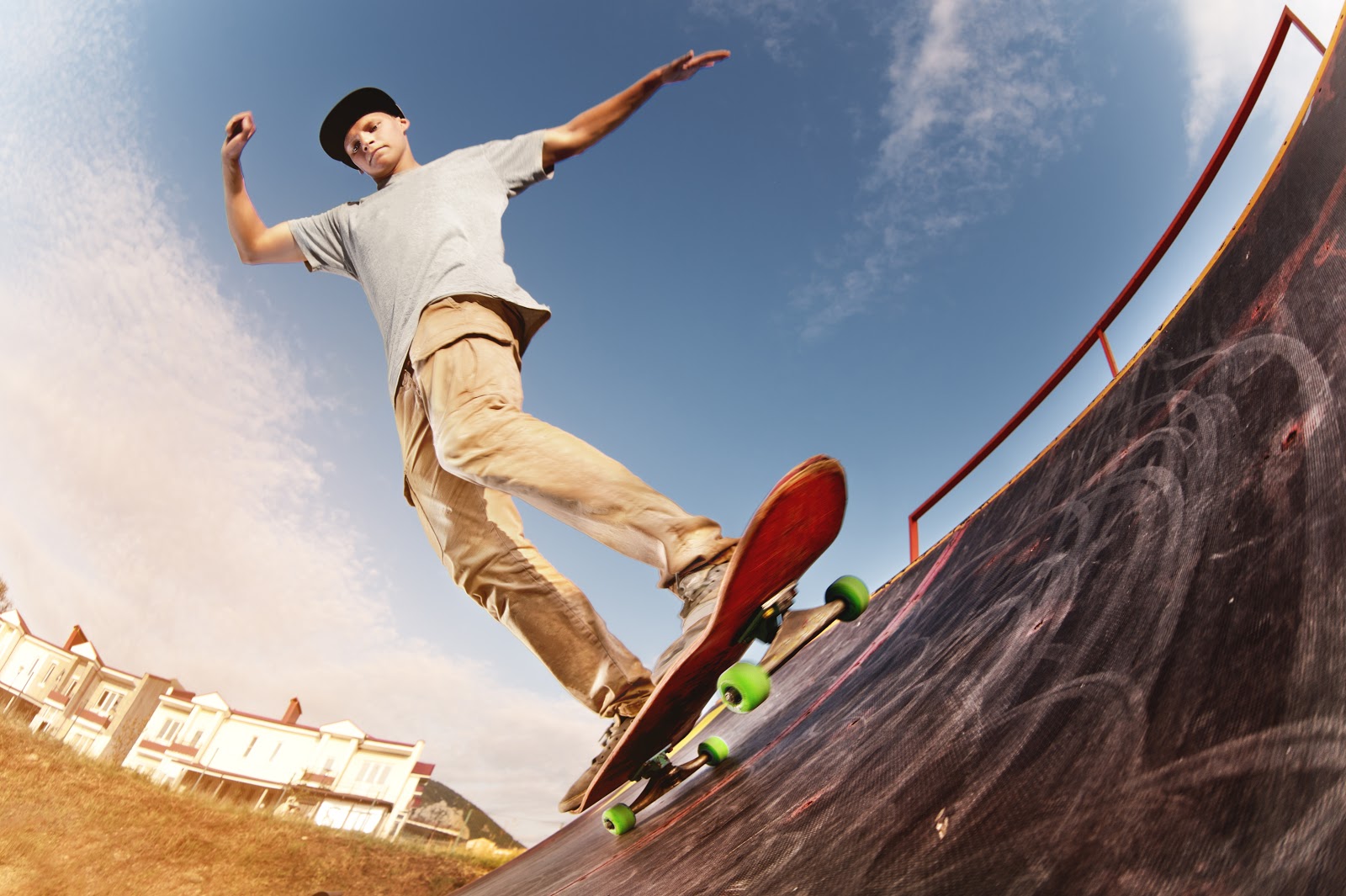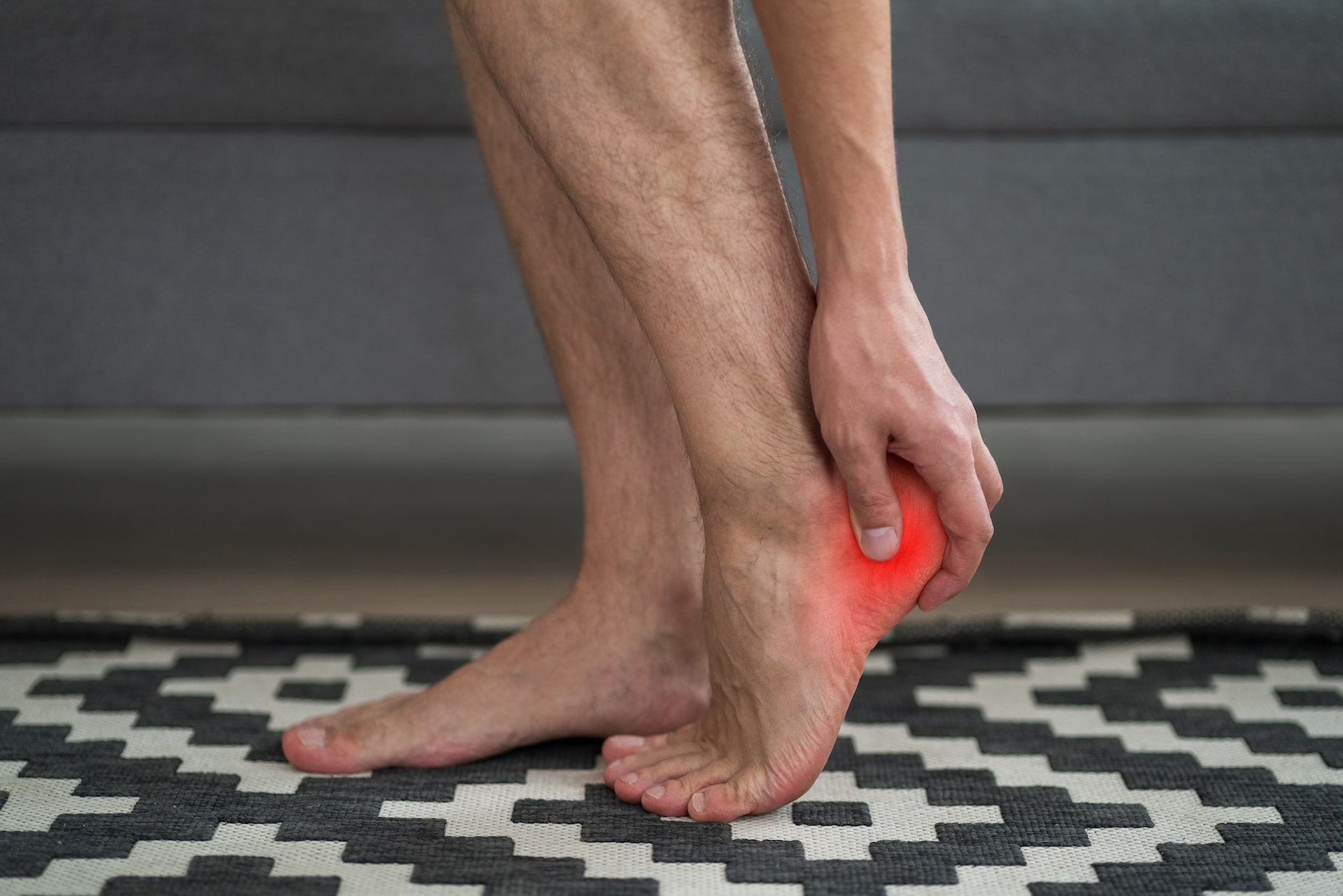
Skateboarding requires a range of athletic skills. Unfortunately, even the best and most experienced of skaters can injure their feet or ankles while doing their tricks. Whether the injury is minor or serious, you should always seek professional help to prevent further complications.
At KC Foot Specialists, we’ve seen it all, many of whom were skateboard enthusiasts. For your reference, we’ve compiled a list of common skateboarding injuries. If it sounds like you (or a loved one) are showing signs of one of these injuries, come see us. We’ll get you back on the board.
4 Most Common Skateboarding Injuries
Plantar fasciitis — Plantar fasciitis occurs due to repetitive stress on the bottom of the feet, stretching from the heel towards the toes. It causes pain in the heel and arch, and is common in skateboarders due to intense gripping motion of the toes while skating and poor calf strength or flexibility.
Tendonitis and sprains — Tendonitis and sprains in the feet, ankles, and knees are common due to overuse and pressure placed on the feet while skateboarding. There is usually localized pain, swelling, and stiffness. A sprain will occur suddenly while tendonitis often develops over time.
Neuroma — A neuroma is a pinched nerve in the foot. The nerve becomes inflamed causing pain, tingling, or numbness between the 2nd, 3rd, and 4th toes. It is typically due to over-pronation, overuse, or poor technique.
Foot, ankle, or lower leg fractures — While most fractures stop you from continuing your activity or walking, others may either be minor enough or in locations that don’t prevent you from continuing. Fractures typically result in pain, bruising, and swelling that don’t quickly resolve.
Prevention of Skateboarding Injuries
You’ve heard it since you were a kid. Wearing protective gear is critical in preventing injuries in the majority of sports. Always wear a helmet and knee, elbow, and wrist guards.
Follow these tips to protect the ankles and feet:
Shoes — Shoes should have flat soles designed to grip the skateboard deck, and should be slip-ons or have laces which leave little excess lacing hanging over the top of the shoe. Skateboarding shoes typically have little to no arch support so consider custom or over-the-counter orthotics. Shoes should prevent heel slippage but also have enough room for the toes so they don’t jam into the front of the shoe.
Flexibility and strength — Calf stretching before and after every skateboarding session will prevent some injuries, as will regular core strength exercises.
Location — Make sure the area where you skateboard is clear of debris, rocks, cracks, or other irregularities. Avoid wet surfaces and don’t skate in the rain. Skate at professionally designed skate parks rather than homemade ramps, and above all, never hold onto a moving vehicle while skateboarding.
Skateboard and technique — Regularly inspect your skateboard for cracks, tears in the grip, loose wheels, or other flaws. If you are new to skateboarding, consider a shorter deck for easier handling and balance. Practice basic skills before attempting more advanced moves, and learn to fall safely. Crouch down if you begin to lose your balance, and practice new or complex tricks in a controlled environment such as a professionally managed skate park or with an instructor.
Diagnosis and Treatment for Skateboarding Injuries
To diagnose skateboard related injuries, the team at KC Foot Specialists will conduct an interview and physical examination, after which a treatment plan will be put in place. Except in the case of obvious fractures or injuries preventing you from walking, treatment can begin conservatively and may include:
Anti-inflammatory medications and R.I.C.E. — Over the counter or prescription medications will reduce swelling and pain. Rest, ice, compression, and elevation (R.I.C.E.) are often combined with anti-inflammatory medications.
Proper shoes and orthotics — If your shoes are old, worn out, or not designed for skateboarding, you should change them. You might also require custom or over-the-counter orthotics for support.
Stretching, massage, or physical therapy — You may be taught stretches to do at home, or you may be scheduled for massage or physical therapy.
Extracorporeal Shock Wave Therapy — Shock wave therapy, a specialty at Kansas City Foot Specialists, treats heel pain by using shock waves to create micro-traumas which promote healing and repair.
Brace or walking cast — For fractures and injuries that aren’t responding to other treatments, a brace or cast may be required to immobilize the foot and ankle, allowing the tissues and bones to rest and heal.
Surgery — Surgery is a last resort treatment but may be combined with conservative therapies both before and after surgery.
If you have any foot or ankle injury related to skateboarding, act now. Call us today at 913-325-2958 or contact us online to schedule your appointment at Kansas City Foot Specialists.



